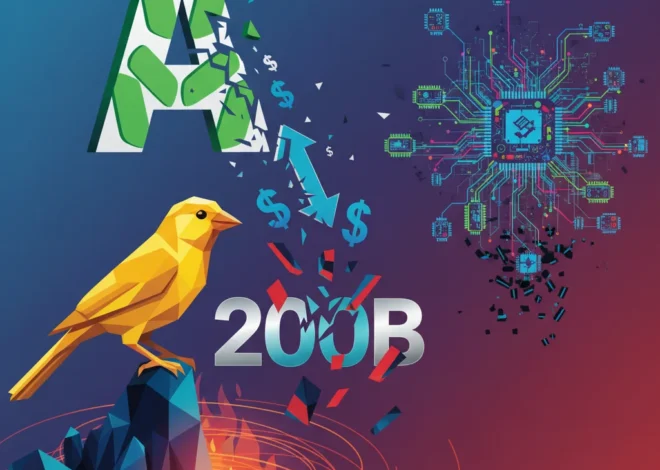
The Glare Economy: What Blinding Headlights Reveal About Modern Finance and Investing
It’s a familiar, frustrating, and increasingly dangerous experience. You’re driving at night, and an oncoming vehicle crests a hill, its headlights searing your retinas with the intensity of a collapsing star. You’re momentarily blinded, disoriented, and your own path forward becomes uncertain. According to a recent study commissioned by the UK’s Department for Transport, you are far from alone. The research found that an overwhelming majority of drivers—nearly all, in fact—believe modern car headlights are too bright, with many reporting they are now actively avoiding night driving.
On the surface, this is a story about automotive engineering and road safety. But look closer, and it serves as a powerful metaphor for the blinding glare of innovation in our modern global economy. The very advancements designed to illuminate the path for one user are creating dangerous externalities for everyone else. This phenomenon is nowhere more apparent than in the world of finance, investing, and financial technology, where a relentless arms race for speed, data, and complexity has left many investors, and even seasoned professionals, feeling dazzled and dangerously exposed.
This isn’t just about bright lights; it’s about systemic risk, regulatory lag, and the unintended consequences of unbridled technological progress. As we navigate the intricate highways of the stock market and the broader financial landscape, we must ask: are our own innovations blinding us to the road ahead?
The High-Frequency Glare: When Financial Technology Blinds the Market
In the automotive world, the evolution from halogen to LED to laser headlights was driven by a desire for greater visibility and safety for the individual driver. In the world of finance, a similar evolution has occurred. We’ve moved from floor traders shouting orders to sophisticated algorithms executing millions of transactions in the time it takes you to blink. This is the realm of High-Frequency Trading (HFT) and complex quantitative strategies—the laser headlights of the financial world.
HFT firms invest billions in co-locating their servers next to stock exchange data centers and developing proprietary algorithms to gain a microsecond advantage. For them, this technology provides a brilliantly illuminated view of the market’s microstructure, allowing them to profit from tiny price discrepancies. However, for the rest of the market participants—from retail investors to traditional pension funds—this intense, focused beam of technology creates a blinding glare. It can lead to “flash crashes,” where markets plummet and rebound in minutes, and it fosters an environment where the speed of light (or at least fiber-optic cable) matters more than fundamental company value. A 2020 report by the US Securities and Exchange Commission (SEC) highlighted how the increasing speed and complexity of trading systems contribute to market volatility and pose unique challenges for oversight (source).
The average investor, much like the average driver at night, is not equipped to compete. They are caught in the glare, unable to see the road clearly, making them more susceptible to market volatility and less confident in the fairness of the system. This information asymmetry is a core problem that the latest wave of fintech was ostensibly meant to solve, but in many cases, it has only amplified the issue.
Beyond the Cockpit: Deconstructing the UK-Turkey Fighter Jet Deal and Its Economic Shockwaves
Regulatory Lag: Driving with an Outdated Map
The UK’s Department for Transport commissioning a study on headlight brightness is a classic example of regulatory bodies playing catch-up. The problem has been anecdotally obvious to drivers for years, yet official recognition and potential action lag far behind the technology’s deployment. This mirrors the perpetual challenge faced by financial regulators worldwide.
The pace of innovation in financial technology—from the rise of decentralized finance (DeFi) on the blockchain to the integration of AI in asset management—is exponential. Regulatory frameworks, by contrast, are developed through a slow, deliberate, and often bureaucratic process. By the time a rule is proposed, debated, and implemented for a specific technology, the industry has often moved on to the next three innovations. This creates a dangerous gap where risk can accumulate unseen, much like a pothole hidden in the glare of an oncoming car.
Consider the world of digital assets and banking. While regulators are still grappling with basic classifications for cryptocurrencies, the DeFi space is already building autonomous, code-based financial ecosystems for lending, borrowing, and trading that operate largely outside traditional oversight. The principles of economics tell us that where there is reward, participants will flock, but without the guardrails of robust regulation, the potential for systemic failure increases dramatically. The challenge for regulators is to be more like adaptive headlights—dynamically adjusting to conditions—rather than a fixed, dim streetlamp that illuminates only a small patch of a long and winding road.
The Investor’s Playbook in a High-Glare Environment
So, how does one engage in investing when the road ahead is filled with blinding lights? The answer isn’t to stop driving. It’s to equip yourself with the right tools and strategies to navigate the glare. This has created a burgeoning sub-sector of the fintech industry focused on providing clarity, transparency, and advanced risk management.
For investors, business leaders, and finance professionals, the key is to shift focus from trying to out-dazzle the competition to seeking out technologies and companies that help everyone see better. This represents a significant investment thesis for the coming decade.
Below is a table outlining the two emerging categories of financial technologies—those that create glare and those that provide clarity.
| Technology Category | Examples | Primary Function | Impact on the Broader Market |
|---|---|---|---|
| “Glare-Creating” Technologies | High-Frequency Trading (HFT), Complex Derivatives, Opaque AI “Black Box” Models | Exploit micro-efficiencies, speed advantages, and complexity for proprietary gain. | Increases volatility, information asymmetry, and systemic risk. Can disadvantage long-term and retail investors. |
| “Clarity-Providing” Technologies | Regulatory Technology (RegTech), Advanced Data Visualization, Transparent Blockchain Ledgers, ESG Analytics Platforms | Simplify complexity, enhance transparency, automate compliance, and provide contextual insights. | Reduces information asymmetry, improves risk management, and builds trust in the financial system. |
The smart money is increasingly flowing towards the “Clarity-Providing” side of the ledger. The global RegTech market, for instance, is projected to grow exponentially, reaching over $55 billion by 2025 as financial institutions grapple with ever-increasing complexity and reporting requirements (source). Investing in the companies building these solutions is akin to investing in the makers of advanced night-vision goggles and anti-glare windshields—they are essential tools for navigating a more hazardous environment.
Bitcoin's 0K Horizon: Decoding the Signals from Wall Street and the Fed
Blockchain: A New Spectrum of Light or Just a Different Glare?
No discussion of modern financial technology is complete without mentioning blockchain. Proponents often hail it as the ultimate source of clarity—a decentralized, immutable ledger that promises unprecedented transparency. In this vision, blockchain is the equivalent of a perfectly lit roadway, where every vehicle’s position and speed are known to all, eliminating the possibility of surprises or hidden dangers.
It offers the potential to reduce settlement times, cut out costly intermediaries in banking and trading, and create a more democratic and accessible financial system. For example, a stock trade executed on a blockchain could be settled instantly and transparently, rather than taking days to clear through a web of opaque legacy systems.
However, for the uninitiated, the world of blockchain, with its dizzying array of protocols, tokens, and consensus mechanisms, can be a blinding strobe light. It’s a new and intense form of technological glare. The very complexity that enables its function also serves as a barrier to entry and a source of new, unforeseen risks. The promise of transparency is real, but so is the potential for sophisticated exploits and the current lack of user-friendly interfaces and regulatory certainty. The future of blockchain in mainstream finance depends on its ability to transition from a blindingly complex tool for specialists to a source of ambient, useful light for the entire economy.
AI and the Economy: Separating Layoff Hype from Labor Market Reality
Conclusion: Towards an Adaptive Financial System
The frustration of millions of drivers being blinded by overly bright headlights is more than a traffic nuisance; it is a warning. It shows how a series of rational, individual-level innovations can combine to create a dysfunctional and dangerous system. The parallels to our global financial system are stark and undeniable.
The blinding speed of HFT, the bewildering complexity of new derivatives, and the lagging pace of regulation all contribute to a “glare economy” where true visibility is reserved for a select few. This erodes trust, increases systemic risk, and makes sound, long-term investing more challenging for everyone.
The solution is not to halt progress or return to a bygone era. We cannot and should not ban LED headlights. Instead, we need to focus on developing *adaptive* systems. The most advanced cars now have adaptive driving beams that shape the light around other vehicles, illuminating the road without blinding other drivers. This must be our goal in finance. We need to build and invest in adaptive financial technologies—systems that prioritize market stability, transparency, and fairness alongside efficiency and profit. By investing in the tools that provide clarity rather than glare, we can ensure that the road to future prosperity is well-lit for everyone.


